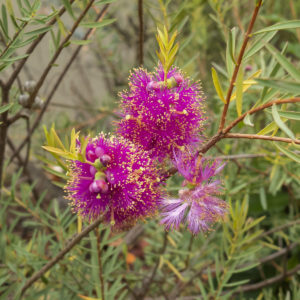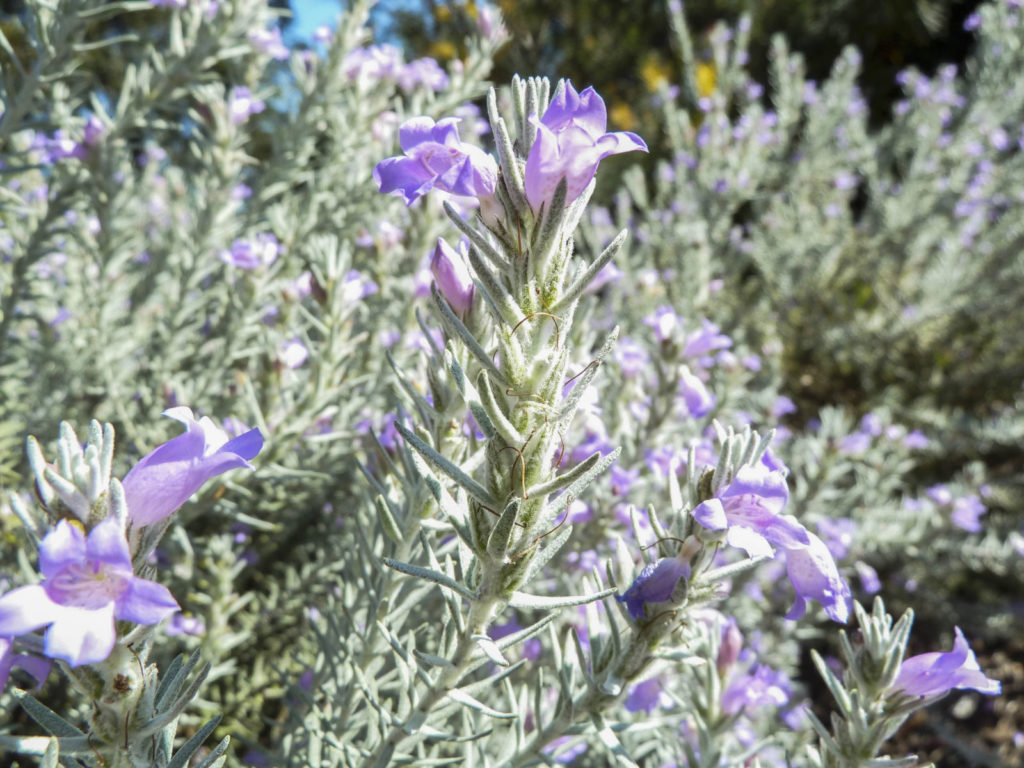With our increasingly hotter and drier conditions and water restrictions in many locations, new approaches are needed even for gardeners used to native plants.
Here are some tips to consider for hotter and drier conditions in general and for more very hot days.
Well-known tips for all gardeners that are still tried-and-true include:
- Choosing plants appropriate for the conditions, which means matching up your conditions and the preferred conditions of plants.
- Grouping plants with similar preferred conditions together in the garden.
- Using mulch to cover the surface of the soil to retain moisture and prevent weeds.
Tips for replacing plants
For existing plants in gardens, our hotter and drier conditions mean that as well as the natural old age deaths of plants, some may disappear before their expected lifespan. Although it is always sad to lose a carefully chosen and nurtured plant, think of it as an opportunity to replace it with a more tolerant plant.
- Research heat and dry-tolerant genera and species.
- Be aware of the preferred conditions of the plants you choose.
- Aim for plants that thrive, not just survive, in our new conditions.
- Consider the likely future climate conditions in your area, particularly when planting trees or longer lasting plants.
- Collect seed or take cuttings from favourite plants so you have a chance to grow more.
Tips for very hot days
- Cover sensitive plants to prevent leaf burn.
- Water well in the days before.
- Prune plants.

Is it really dead?
Don’t be too quick to write-off a plant after a bout of hot weather. It may look unhappy, but could recover from wilted or dead leaves. Even with dead leaves, the rest of the plant may still be alive. Prune off affected foliage then water well and wait to see what happens. Research if the plant has a lignotuber, epicormic buds or other ways to recover from leaf damage. For larger plants with a trunk, scrape away a small piece of bark to see if the plant is alive.
Tips for plants in pots
Plants in pots need particular care due to their smaller amount of soil and ability to dry out faster.
- Avoid black plastic pots. Even sitting a black pot in another larger lighter colour pot can help.
- Use waterwell pots to allow plants to draw on moisture as they need it.
- Cover the soil surface with mulch.
- Use bigger pots.
- Soak pots in a bucket of water and let them drain to fully soak them.
- Move pots to a shadier, sheltered position, on a day forecast to be particularly hot and/or windy.
Thriving not just surviving

An example of plants which thrive may be eremophilas, but not correas. Maria Hitchcock, the former leader of the Correa Study Group and holder of the National Correa Collection in Armidale NSW, writes in the December 2019 Correa Study Group newsletter that correas are generally thought to be drought-hardy plants and until the current drought she has rarely had to water her well-mulched gardens. However, the current conditions have proven disastrous for many recent and even well-established plants. While Maria’s collection is now being held in pots until the drought ends, climate change may lead to a rethink on how we garden, possibly moving towards more deep-rooted trees rather than shallow-rooted shrubs such as correas.
The Gardening Australia February 2020 issue has ideas too.
Send your tips or success stories to the enewsletter editor Rhonda Daniels at enewsletter@austplants.com.au
